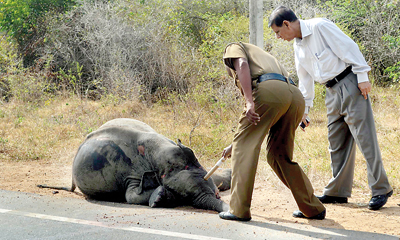News
The stalling saga of CPC’s fuel fiasco
private vehicles
= Failure to act on initial detection at Colombo Port results in damage to trains, buses, and Health Dept. vehicles
= Diesel imported from Vitol which was blacklisted in 2009, reinstated in 2011 and now delisted once again
Two weeks ago a worker at the Colombo Port operating a transfer crane detected a difference in colour in the diesel being pumped into the crane from a bowser of the Ceylon Petroleum Corporation (CPC). He pointed this out to the driver of the bowser, who in turn said since the stocks were issued directly from the CPC there was nothing to worry.
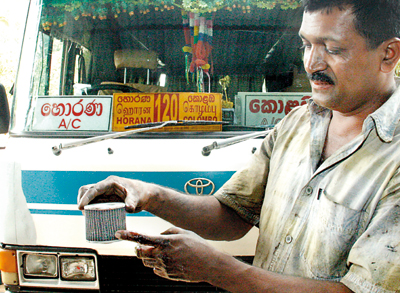 The driver of this bus that stalled on the expressway shows the damaged filter and (below) the silencer of the bus blocked by carbon in one day, because of the contaminated diesel. Pix by Indika Handuwala |
 |
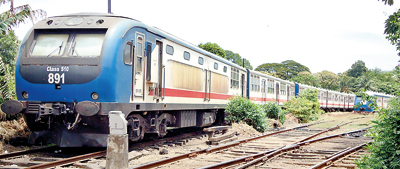 |
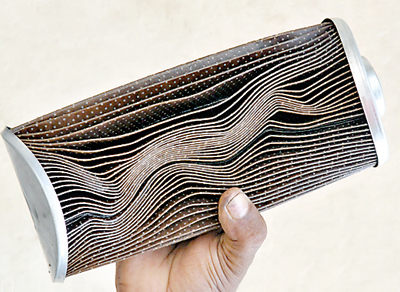 Two stalled trains under repair (above) and a damaged filter of one of the trains |
However, the CPC worker’s suspicion was confirmed a few hours later when one of the transfer cranes stalled. A few hours later a few more cranes stalled. An inspection of the machines by the engineers revealed that the filters had been damaged due to possible defect in the fuel used.
According to port officials more cranes stalled in the next few days, but no remedial action was taken to prevent the suspected contaminated fuel being used. Finally, as many as 18 cranes were rendered out of action. Except for four the others have been repaired.
This was the beginning of the latest fuel contamination to hit the country following the case of petrol contamination in June last year and kerosene in May this year. Last year’s petrol contamination issue resulted in more than 5,000 vehicles being damaged. About 3,000 vehicle owners sought compensation.
The failure of authorities to act following the initial detection made at the Colombo Port led to more damage as the contaminated fuel stocks continued to be distributed. However, in contrast to previous instances where contaminated petrol stocks damaged thousands of private vehicles last year, this time it was mostly the state- owned vehicles that were affected.
Initial investigations revealed that the substandard fuel had been mainly distributed to the Ports, Railway, Sri Lanka Transport Board and the Health Department.
![]()
It took a week after the initial detection, for the fuel to affect the railway engines.At least six trains stalled due to engine failure and currently some of them are under repairs at the Maradana railway yard, Railway sources said.
An inspection of both train engines confirmed that the damage was caused due to fuel contamination and as in the case of the cranes, the filters in the engines had been damaged.
As many as 30 power sets and six single engines were affected over the week, the sources added.As many as 50 state-run buses including seven luxury buses which operated on the southern expressway too had stalled. The Health Ministry too was affected with at least 40 vehicles including ambulances stalling.
Following these incidents, the CPC was forced to issue Super Diesel for trains and buses resulting in an additional cost of Rs. 44 a litre.There were no immediate reports about damages caused to private vehicles, despite claims by the Private Bus owners’ Association President Gemunu Wijeratne that they had received about a 1,000 complaints that filters had to be changed.
In spite of state institutions complaining about the contaminated fuel, last Saturday the Ceylon Petroleum Storage Terminals Ltd issued a statement stating that despite reports about the issue of contaminated fuel, the lab tests had proved that the diesel stocks were in keeping with the proper standards.
The statement went onto explain that usually before unloading fuel two checks are conducted to ensure that they meet required specifications . However, three days later the Ministry of Power and Energy said that they had sent samples to two foreign labs for testing, as the complaints continued to flow in.
The Ministry also said that further complaints would be entertained by the CPC Regional Managers.
The latest fuel stock which was reported to be substandard had been imported from Vitol- one of the largest oil trading companies, according to Minister of Petroleum Industries, Susil Premajayantha.
In 2009 this very company was blacklisted by the CPC for supplying a stock of High Sulphur Fuel Oil mixed with waste lubricants.In 2011, Vitol was reinstated by the CPC after the company made a payment of US dollars 150,000 (Rs 16.8 million) during the period of former Chairman Harry Jayawardena.
The company made was de-listed once again following the latest detection of substandard fuel pending investigations while vehicle owners are apprehensive about the fuel they pump in from wayside fuel stations.
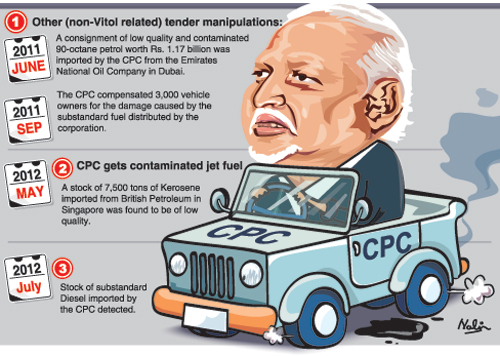 |
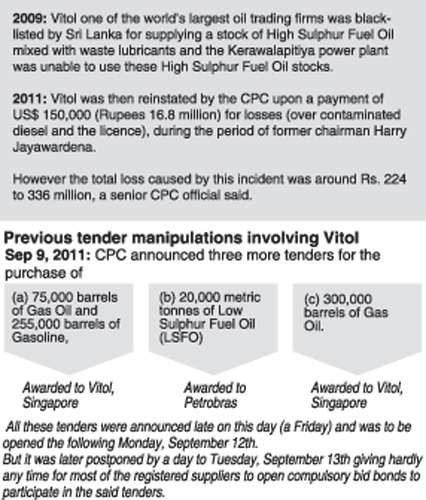 |
comments powered by Disqus




















